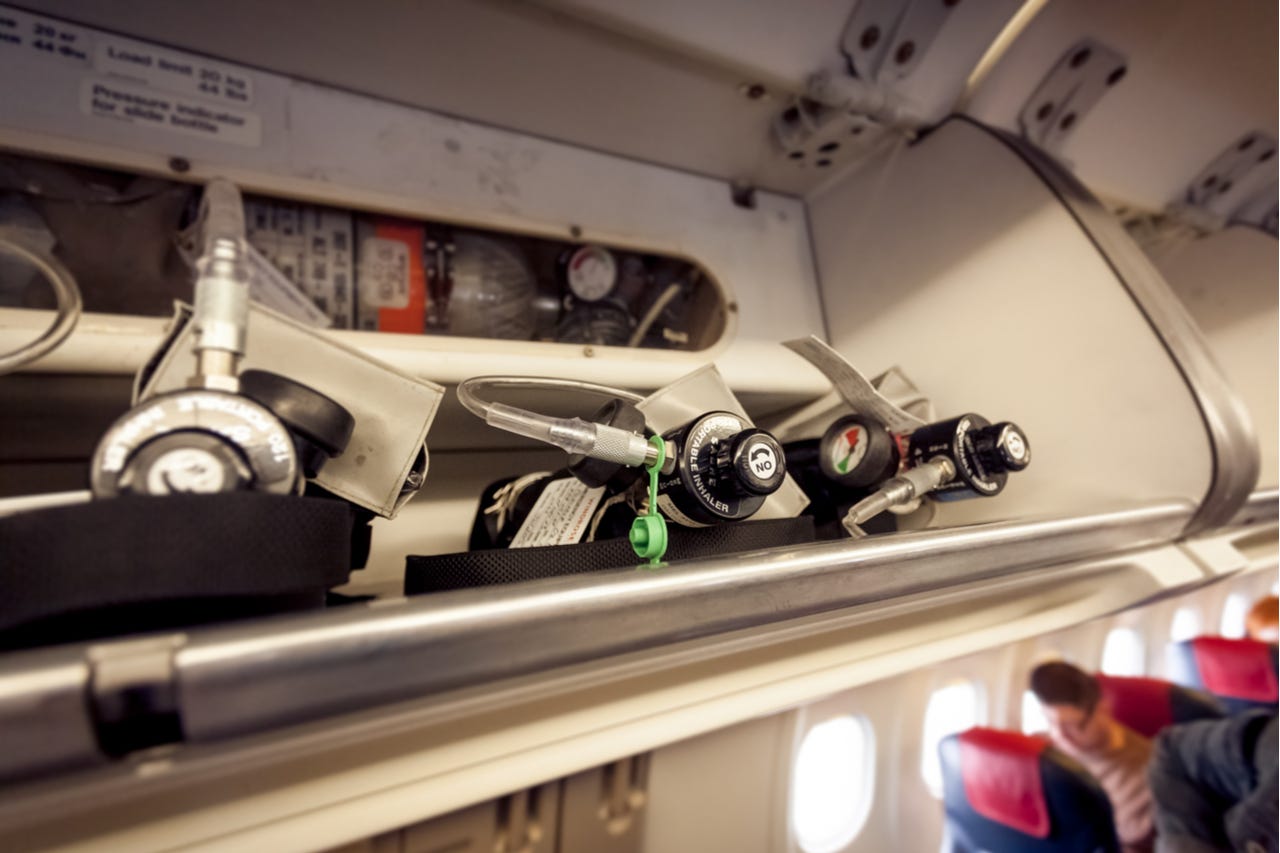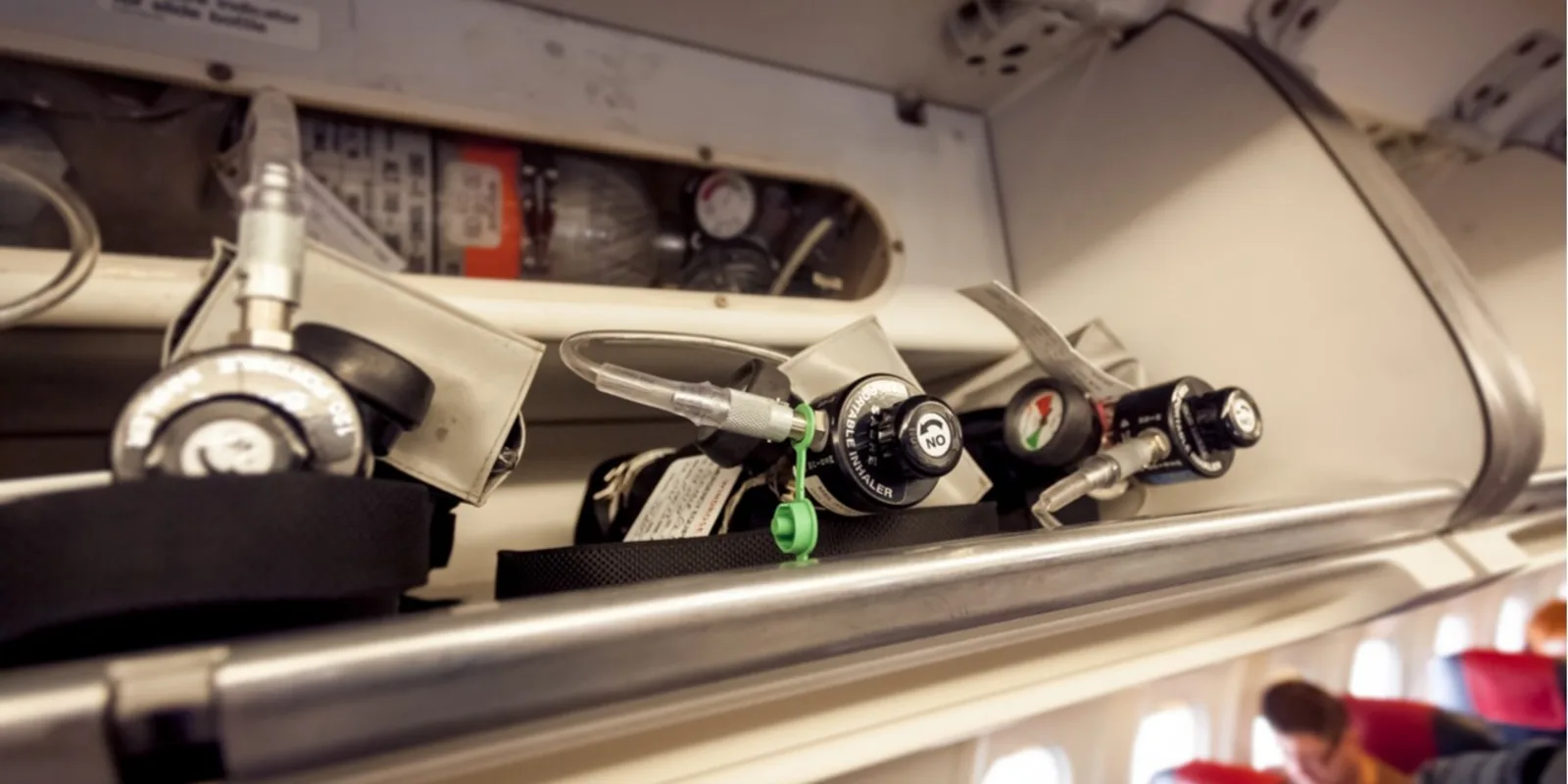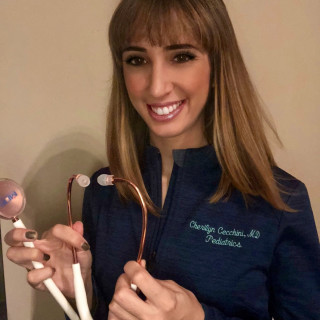
Five hours into the flight and one 400-page novel later, I am just teeing up the “Lego Batman” movie on my screen when I notice the passengers seated near me all turning toward the back of the flight.
I start to have an inkling, and then I hear it, “Is anyone here a doctor?”
“We need medical help!”
A passenger has collapsed near the back of the plane. I literally have no shoes on, but I surprise the person next to me when I answer with “I am!” and unbuckle my seat belt to head over to where the call emanated.
Already my mind is racing, and I haven’t even made it to the aisle. Did he hit his head? Could he have a c-spine injury? Is he seizing? Maybe he has a seizure disorder. Is there diazepam on the plane? What if he has an arrhythmia? Does he have a pre-existing heart condition? How on earth do you check a rhythm strip on a flight? Could he have had a stroke? Immediately I’m on the ground next to him.
I hear my voice asking, “Did anyone witness the fall?” I call for a medical kit. I crouch down, instinctively feel for a pulse, and check for breathing.
“Oh, thank gosh, you’re a nurse!”
“I’m a physician,” I reply. “Pediatrician,” as an afterthought. Thinking that I could really use a nurse to help obtain IV access or draw up and administer meds, though. Also, an adult doctor would probably be helpful.
Thankfully his heart is beating, and he is breathing. HR 90s, RR 20. I need to check blood pressure. He seems to be awakening. I’m frantically opening the medical kit, not knowing what to expect. Is there even a stethoscope in this thing?
“Do you know where you are?”
“Yes, on a flight.”
“Can you tell me your name?” He answers appropriately.
“Do you remember falling?”
“No,” he replies.
He’s extremely diaphoretic. He doesn’t seem to have fallen on his head based on sparse information given by fellow passengers, and he denies any c-spine tenderness. We peel off his outer layer and I apply the sphygmomanometer. I start inflating the cuff and measuring the BP: 80/50 mmHg, which is not the best for a male this size who seems to be in his mid 30s. I start asking about medical history. Any medications? Changes in medications? Have you taken those today? Yes, he has a chronic medical condition, but no significant neurological or cardiac history. He takes the same medications daily without any recent changes. Nothing like this has happened before. He last ate a granola bar six hours ago and has had some alcohol, but not much else. He feels warm. There is no thermometer in the medical kit. There is no blood glucose monitor in the medical kit. Seriously?
We slowly sit him up and get him into a seat. He is able to drink by mouth, so orange juice and water are given to him and he takes slow sips. I make the decision that he does not need an IV emergently. I think to myself, thank heavens! I haven’t started an IV on an adult in I’m-not-sure-how-long. Vital signs remain stable. Neurological exam demonstrates no focal findings. Heart is beating at regular rate and rhythm from what I can hear through the equivalent to an isolation yellow medical stethoscope (only this one is black). Blood pressure has improved to 120/70 mmHg.
I discuss with him the most likely scenario: dehydration, maybe a touch of hypoglycemia, most consistent with a vasovagal episode. While it’s less likely a cardiac or neurologic etiology, he could opt to go to the hospital once off the flight for an EKG or monitoring. I stress that a repeat episode would be more worrisome and encouraged him to stay hydrated for the remainder of the flight.
“Do you need me to document anything?” I ask.
“No, I will record everything,” comes from a flight attendant.
What? How can you write up the differential that I had in my mind and the steps I took to rule those out? I end up walking back to my seat and typing up the series of events to explain my thinking. I feel the need to formally document this, and I sign my name and fill in the date and time. I show this to a different flight attendant and she snaps a picture. I have no clue what the formal protocol is for this type of event.
Which brings me to my next point: Are physicians well prepared for these every day real life emergencies? I’d argue, only partly. I think I heard a medical school lecture about vital signs when in the air and to expect a low pulse ox, but otherwise, nothing really comes to mind. I had no idea what to find and where to find it in the medical kit. Should this type of learning be stressed every so often to physicians? I would argue, yes, it should. Despite this being a rare occurrence, I think that it would be useful to have some training about the medical equipment available to you when in flight or even riding a train. This information should be refreshed every so often, or perhaps a detailed resource should be available to physicians to bookmark and refer to before traveling.
“Thank you so much for your help.”
“We were so relieved to have you on board.”
He gave me a wave before he exited his seat after we landed. The gratitude expressed by the staff was much appreciated as I gathered my belongings. I de-boarded the plane, waved goodbye, and headed to my final destination.
Thankfully, I was able to provide reassurance and assistance and the situation wasn’t more serious. Regardless, I want to feel prepared in the future if the circumstances are indeed dire. Ultimately, here’s to hoping that medical education is expanded to include this topic such that medical professionals in these kinds of scenarios are fully prepared for all possibilities.
To everyone: safe travels!







